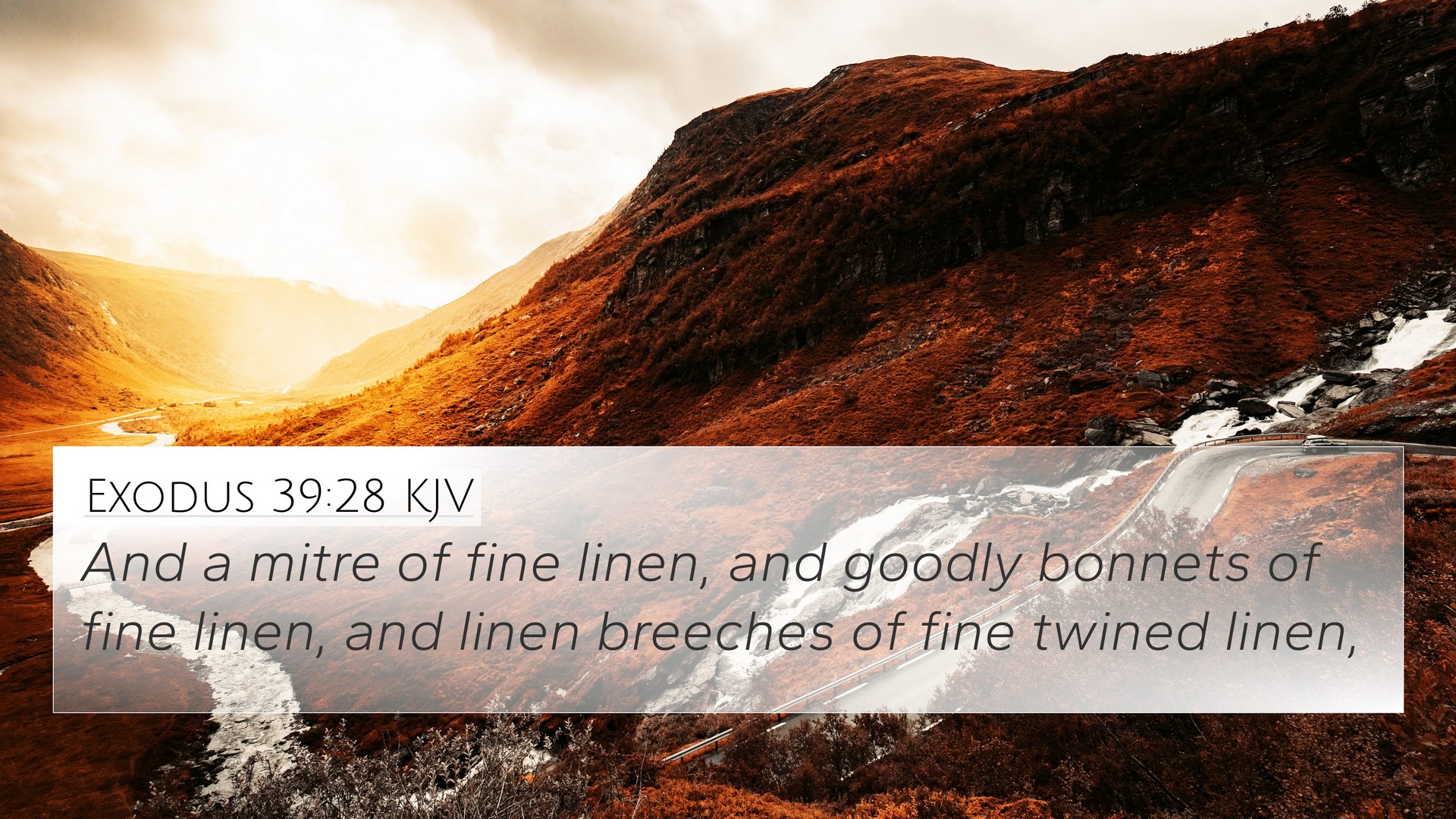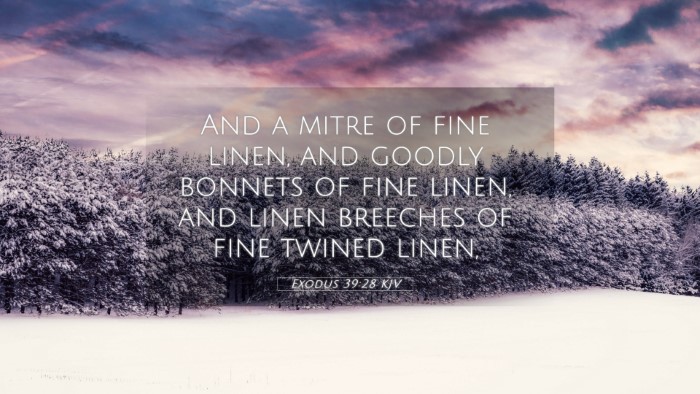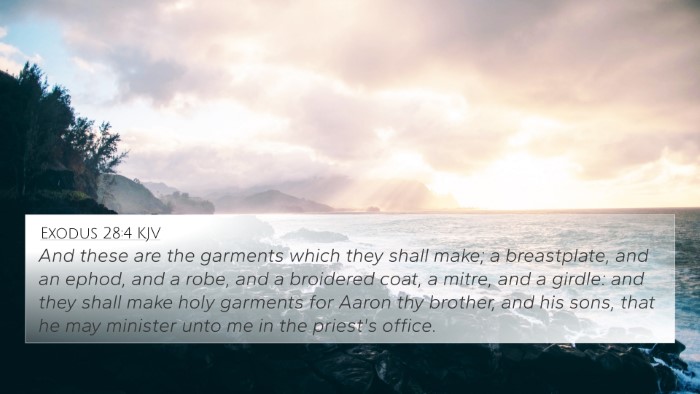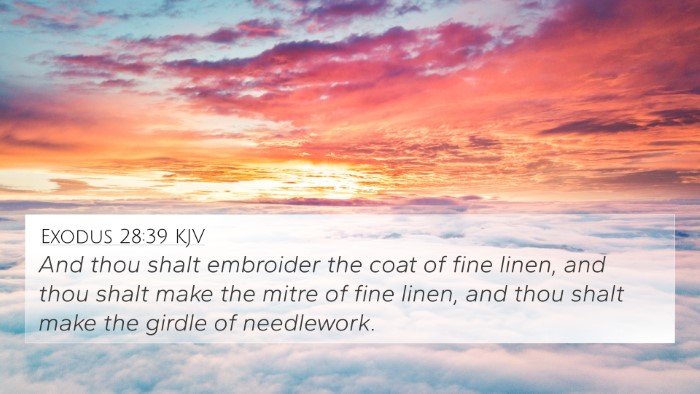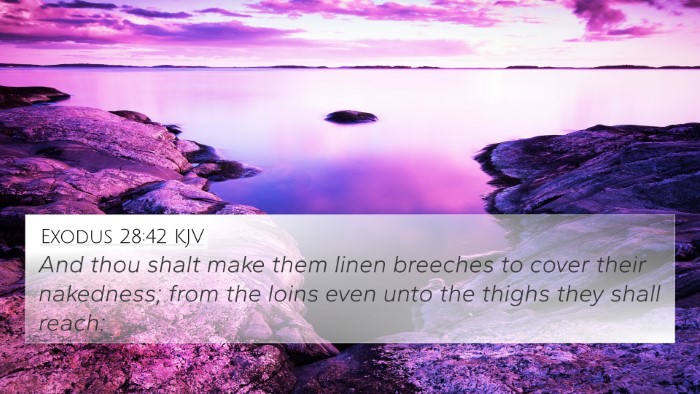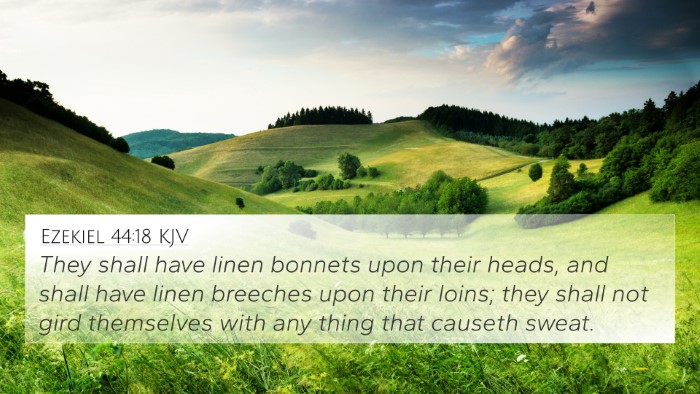Understanding Exodus 39:28
Exodus 39:28 states: "And a plate of the holy crown of pure gold was made, and wrote upon it a writing, like to the engravings of a signet, HOLINESS TO THE LORD." This verse describes part of the priestly garments constructed for Aaron, emphasizing the sacredness required in his role as High Priest.
Summary of Insights
This verse highlights several important themes regarding holiness, leadership, and the significance of symbols in worship. The detailed description serves both as historical documentation of the ancient Israelite worship system and as a spiritual lesson for believers today.
Key Themes
- Holiness: The inscription "HOLINESS TO THE LORD" underscores the necessity of holiness in the worship of God.
- Leadership: Aaron's garments symbolize the responsibilities and attitudes required of leaders in the faith.
- Symbolism: The crown represents legitimacy and consecration to God's service.
Comparative Analysis
The verse connects with several other scripture passages, providing deeper insight into its meaning through comparative Bible verse analysis:
- Leviticus 21:6: "They shall be holy unto their God, and not profane the name of their God..." This verse echoes the call for holiness among priests.
- 1 Peter 1:16: "Because it is written, Be ye holy; for I am holy." Here, the call to holiness extends from the Old Testament to New Testament believers.
- Revelation 19:16: "And he hath on his vesture and on his thigh a name written, KING OF KINGS, AND LORD OF LORDS." Both verses affirm God's authority and holiness.
- Exodus 28:36-38: Discusses the significance of the high priest’s headplate which also focuses on holiness to the Lord.
- Philippians 4:8: “Finally, brethren, whatsoever things are true... think on these things.” This verse encourages believers to pursue holiness in thought and action, paralleling the emphasis on holiness in Exodus.
- Isaiah 6:3: "Holy, holy, holy, is the Lord of hosts: the whole earth is full of his glory." The holiness of God is central to worship and mandates reverence.
- Hebrews 9:22: "Without shedding of blood is no remission." This reflects the themes of sacrifice and consecration, related to the holiness represented in the priestly garments.
- Matthew 23:19: "Ye fools and blind: for whether is greater, the gift, or the altar that sanctifieth the gift?" This introduces a discussion on what truly sanctifies, linking to the idea of holiness.
- Romans 12:1: "I beseech you therefore, brethren, by the mercies of God, that ye present your bodies a living sacrifice, holy, acceptable unto God..." This New Testament instruction echoes the Old Testament call to holiness.
Importance of Cross-Referencing
Using tools for Bible cross-referencing can enhance one's understanding of scripture. Cross-referencing allows believers to explore thematic Bible verse connections, thereby enriching their spiritual insights and knowledge.
How to Use Bible Cross-References
To effectively study and identify connections between Bible verses, one can follow these steps:
- Utilize a Bible concordance or a cross-reference Bible study guide to find related verses.
- Look for Bible chain references that link similar themes or messages across scripture.
- Engage in cross-referencing Bible study methods to deepen comprehension of Biblical themes.
Conclusion
Exodus 39:28 serves as a poignant reminder of the holiness required of God's leaders and the significance of sacred symbols in worship. Through inter-Biblical dialogue and comparative study, one can appreciate the rich tapestry of themes connecting this verse with the broader narrative of scripture.
